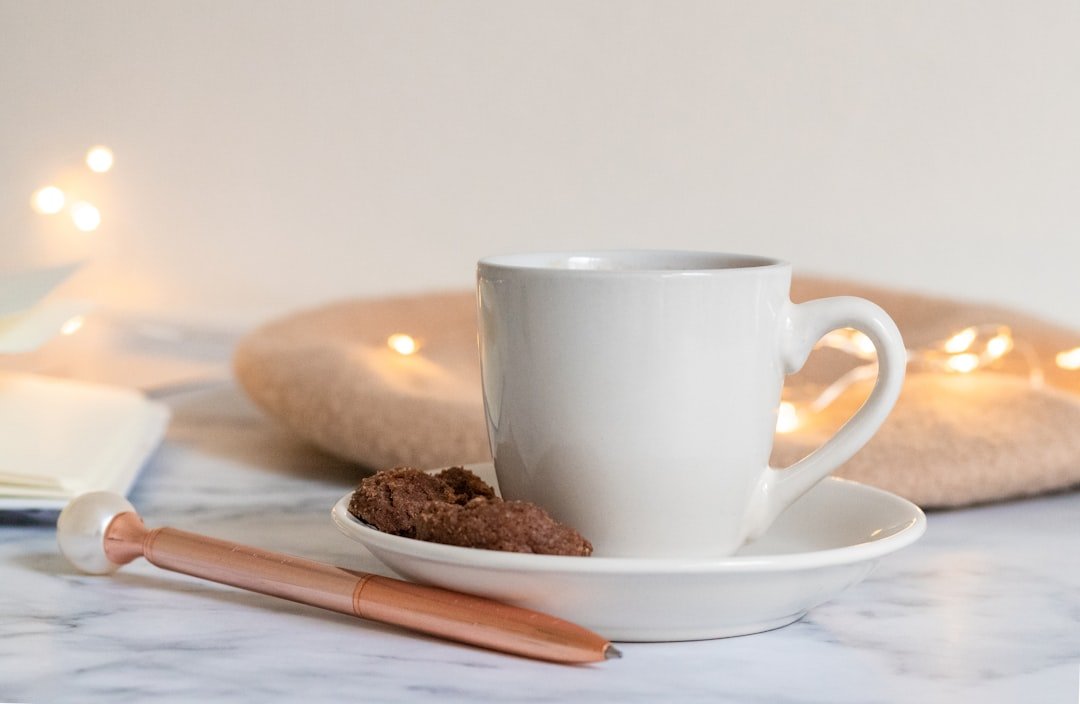This post may contain affiliate links. When you purchase through links on our site, we may earn an affiliate commission.
Open floor plans have gained immense popularity in modern architecture and interior design, primarily due to their ability to create a sense of spaciousness and fluidity within a home. This design concept eliminates traditional barriers between rooms, allowing for a seamless transition from one area to another. The absence of walls fosters an environment that encourages interaction and connectivity among family members and guests.
For instance, a kitchen that flows directly into a living room can facilitate social gatherings, making it easier for hosts to engage with their guests while preparing meals. This layout not only enhances the functionality of the space but also promotes a more inclusive atmosphere. However, embracing an open floor plan requires a thoughtful approach to design and decor.
Without the natural boundaries provided by walls, it becomes essential to establish a sense of organization and purpose within the space. This can be achieved through strategic furniture placement and the use of decorative elements that guide the eye and create visual interest. For example, a large sectional sofa can serve as a natural divider between the living area and dining space, while a well-placed area rug can define the boundaries of each zone.
Understanding how to embrace the flow of an open floor plan is crucial for creating a harmonious living environment that balances openness with functionality.
Key Takeaways
- Embrace the flow of open floor plans by allowing for easy movement and sightlines throughout the space.
- Define separate areas within an open floor plan using furniture and rugs to create distinct zones for different activities.
- Create cohesiveness in an open floor plan by using consistent color schemes and design elements throughout the space.
- Utilize room dividers such as screens, bookshelves, and curtains to add privacy and separation to different areas of an open floor plan.
- Incorporate statement pieces like artwork and sculptures to add visual interest and personality to an open floor plan.
Define Separate Areas: Using Furniture and Rugs
In an open floor plan, defining separate areas is vital for maintaining functionality and comfort. Furniture plays a pivotal role in this process, as it can be arranged to create distinct zones without the need for physical barriers. For instance, a dining table can be positioned adjacent to the living area, with chairs that complement the sofa’s design, thereby establishing a cohesive yet separate dining space.
Additionally, using furniture with varying heights can help delineate areas; a tall bookshelf can act as a visual barrier between the living room and home office, while still allowing light and air to flow freely. Rugs are another powerful tool for defining spaces within an open floor plan. A well-chosen area rug can anchor a seating arrangement, providing a sense of warmth and intimacy.
For example, placing a plush rug under a coffee table creates a cozy nook within the larger living area, inviting people to gather and relax. Similarly, using different rugs in adjacent zones can help distinguish between areas while maintaining an overall cohesive aesthetic. A bold geometric pattern in the living room can contrast beautifully with a softer, more subdued design in the dining area, allowing each space to have its own identity while still feeling connected.
Create Cohesiveness: Using Consistent Color Schemes

A consistent color scheme is essential for creating cohesiveness in an open floor plan. When different areas of a home are painted or decorated in contrasting colors, it can lead to a disjointed appearance that disrupts the flow of the space. Instead, selecting a harmonious palette that carries throughout the various zones can unify the design and enhance the overall aesthetic.
For instance, using shades of blue and gray across both the living room and kitchen can create a serene atmosphere that feels intentional and well thought out. In addition to wall colors, incorporating consistent hues in furniture and decor items further reinforces this cohesiveness. For example, if the living room features navy blue accents in throw pillows and artwork, introducing similar tones in the dining area—such as in table settings or decorative vases—can create visual continuity.
This approach not only ties the spaces together but also allows for personal expression through variations in texture and pattern within the chosen color scheme. By thoughtfully curating colors throughout an open floor plan, homeowners can achieve a balanced and inviting environment.
Utilize Room Dividers: Screens, Bookshelves, and Curtains
| Room Divider Type | Benefits | Considerations |
|---|---|---|
| Screens | Portable, easy to move, decorative | May not provide complete privacy |
| Bookshelves | Storage space, sound absorption | May require assembly, limited mobility |
| Curtains | Flexible, lightweight, affordable | Less sound insulation, may require installation |
While open floor plans promote connectivity, there are times when privacy or separation is desired. Room dividers offer an effective solution for creating distinct areas without sacrificing the openness of the layout. Decorative screens can serve as stylish partitions that add character to a space while providing a sense of enclosure.
For example, a beautifully crafted folding screen can separate a home office from the living area, allowing for focused work time without completely isolating oneself from family activities. Bookshelves are another versatile option for room dividers. They not only provide storage but also act as visual barriers that define spaces within an open floor plan.
A tall bookshelf filled with books and decorative items can create an inviting backdrop for a reading nook while still allowing light to filter through. Additionally, curtains can be employed as flexible dividers; they can be drawn closed for privacy or opened to maintain an airy feel. This adaptability makes curtains an excellent choice for spaces that require occasional separation without permanent alterations.
Incorporate Statement Pieces: Artwork and Sculptures
In an open floor plan, statement pieces such as artwork and sculptures play a crucial role in adding personality and character to the space. These focal points draw attention and serve as conversation starters while enhancing the overall aesthetic of the home. Large-scale artwork can be strategically placed on walls that are visible from multiple angles, creating visual interest that captures the eye as one moves through different areas of the home.
For instance, a vibrant abstract painting in the living room can set the tone for the entire space, influencing color choices and decor elements throughout. Sculptures also contribute significantly to the ambiance of an open floor plan. A striking sculpture placed on a pedestal in an entryway or near a window can create an inviting atmosphere that welcomes guests into the home.
Additionally, incorporating smaller sculptures on shelves or coffee tables adds layers of texture and dimension to the decor. When selecting statement pieces, it’s essential to consider their scale and proportion relative to the surrounding furniture and space; oversized pieces may overwhelm smaller areas, while delicate items may get lost in larger expanses.
Light it Up: Using Lighting to Define Spaces

Lighting is one of the most powerful tools in interior design, particularly in open floor plans where it can be used to define spaces effectively. Different types of lighting—ambient, task, and accent—can be strategically employed to create distinct zones within an expansive area. Ambient lighting provides overall illumination, while task lighting focuses on specific activities such as reading or cooking.
For example, pendant lights above a dining table not only illuminate the area but also visually separate it from adjacent spaces. Accent lighting can further enhance the ambiance by highlighting artwork or architectural features within an open floor plan. Wall sconces flanking a piece of art or strategically placed spotlights can draw attention to focal points while adding depth to the overall design.
Additionally, layering different types of lighting allows for flexibility; dimmers can adjust brightness levels based on mood or time of day, creating an inviting atmosphere that adapts to various activities within the home.
Bring in Nature: Using Plants and Greenery
Incorporating plants and greenery into an open floor plan not only enhances aesthetics but also contributes to improved air quality and overall well-being. Plants bring life into any space, creating a sense of tranquility and connection to nature that is often missing in urban environments. Strategically placing potted plants or hanging planters throughout different areas can help define spaces while adding color and texture.
For instance, tall indoor trees can serve as natural dividers between living areas, while smaller plants on shelves or tables add layers of interest without overwhelming the design. Moreover, selecting plants that thrive indoors ensures longevity and ease of care. Low-maintenance options such as snake plants or pothos are ideal for busy households, providing greenery without requiring extensive upkeep.
Additionally, incorporating natural elements like wooden planters or stone pots can further enhance the organic feel of the space. By thoughtfully integrating plants into an open floor plan, homeowners can create a refreshing environment that promotes relaxation and well-being.
Personalize with Textiles: Throw Pillows and Blankets
Textiles are essential for adding warmth and personality to an open floor plan. Throw pillows and blankets not only provide comfort but also serve as opportunities for personal expression through color, pattern, and texture. By layering different textiles across furniture pieces—such as sofas or chairs—homeowners can create inviting spaces that encourage relaxation and social interaction.
For example, mixing patterned pillows with solid-colored ones adds visual interest while maintaining cohesion within the overall design. Blankets draped over sofas or chairs not only enhance comfort but also contribute to the aesthetic appeal of an open floor plan. A chunky knit throw adds texture and warmth during colder months while serving as a decorative element year-round.
Additionally, incorporating textiles from various cultures or regions can infuse character into the space; handmade quilts or ethnic prints tell stories that reflect personal journeys and experiences. By thoughtfully selecting textiles that resonate with their style, homeowners can create inviting environments that feel uniquely their own.
If you’re looking for more tips on creating a cozy and inviting home environment, be sure to check out the article Your Cozy Nook Awaits: A Guide to Crafting a Serene Home Environment from A to Z Cozy Corner. This article offers valuable insights on how to transform your space into a peaceful and relaxing sanctuary.
FAQs
What is transitional decor?
Transitional decor is a design style that combines elements of traditional and contemporary styles. It often features a mix of classic and modern furniture, neutral color palettes, and a focus on comfort and functionality.
What are open floor plans?
Open floor plans are architectural designs that eliminate walls and barriers between different living spaces, such as the kitchen, dining area, and living room. This creates a more spacious and interconnected layout within a home.
How can transitional decor be applied to open floor plans?
Transitional decor can be applied to open floor plans by using a mix of traditional and contemporary furniture, incorporating neutral color schemes, and creating a cohesive design that flows seamlessly between different living areas.
What are some key elements of transitional decor for open floor plans?
Key elements of transitional decor for open floor plans include comfortable and versatile furniture, neutral color palettes, natural materials such as wood and stone, and a focus on creating a harmonious and balanced design throughout the space.
What are some tips for achieving transitional decor in an open floor plan?
Some tips for achieving transitional decor in an open floor plan include choosing furniture with clean lines and classic silhouettes, incorporating a mix of textures and patterns, using a neutral color scheme with pops of color for visual interest, and creating designated areas for different activities within the open space.

 using WordPress and
using WordPress and 
No responses yet